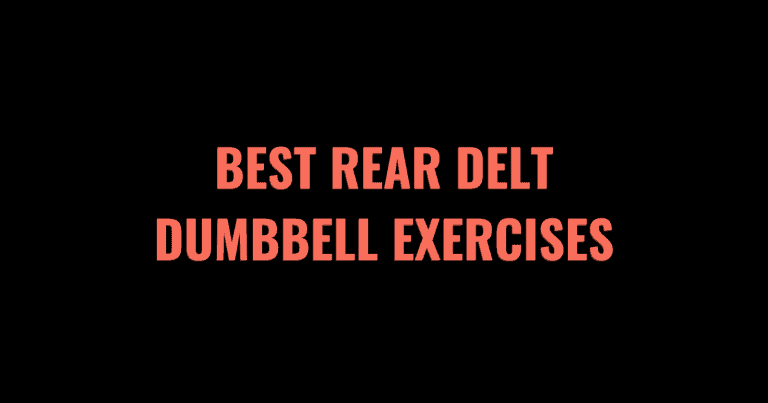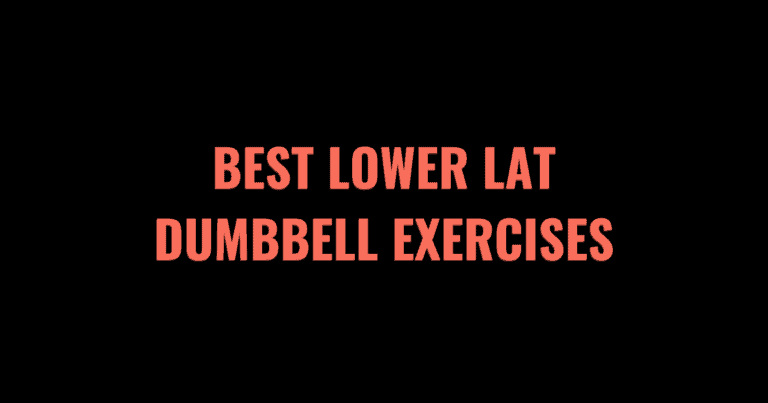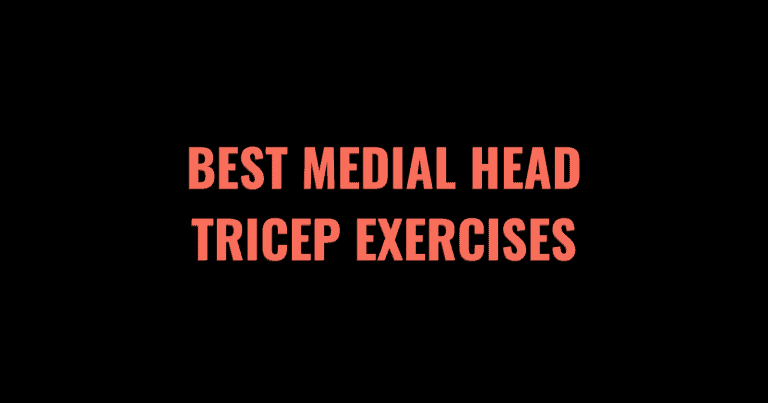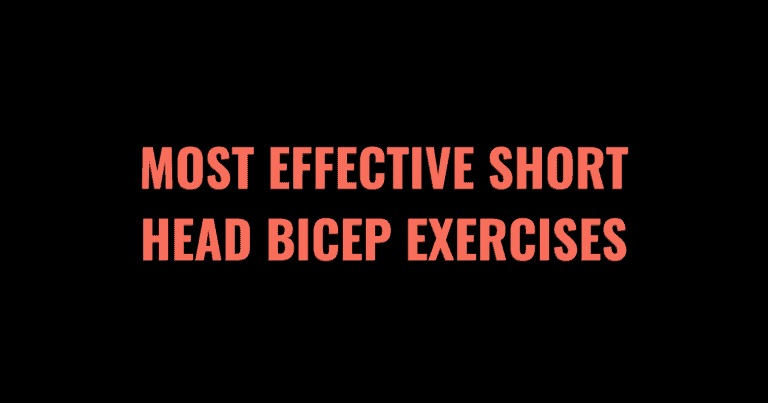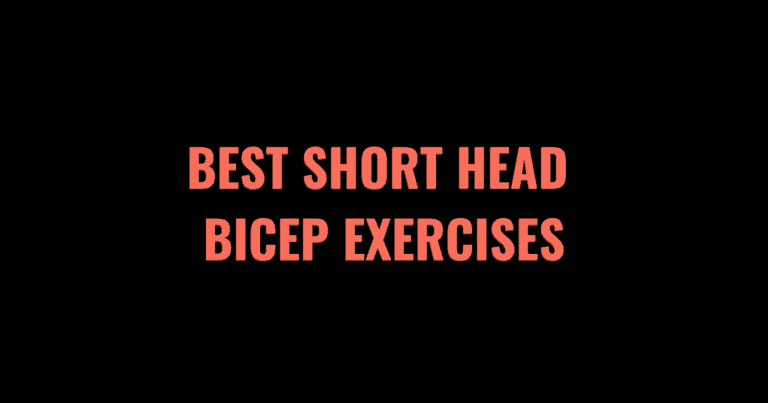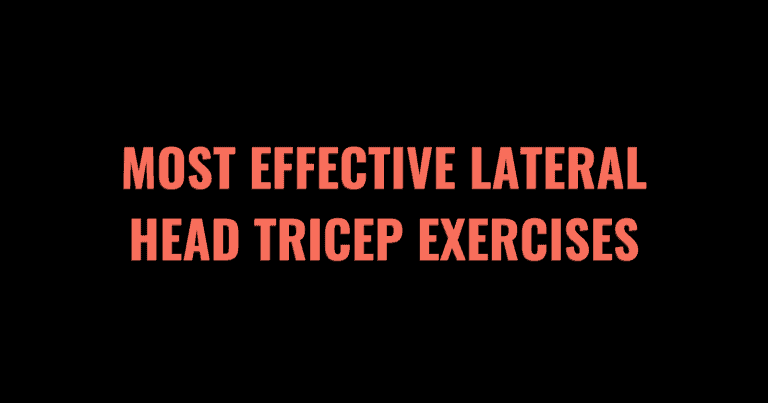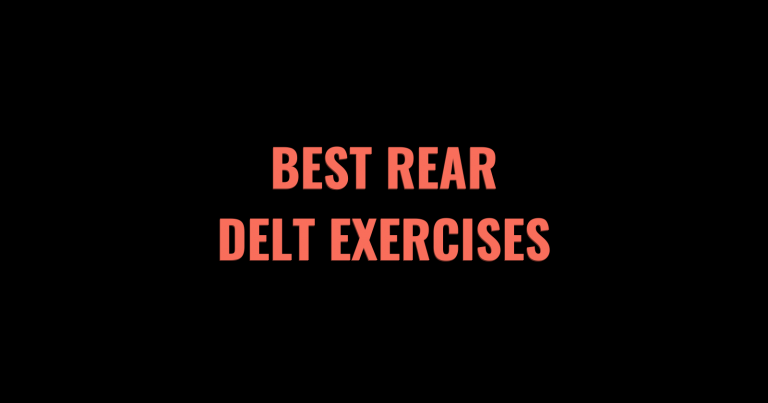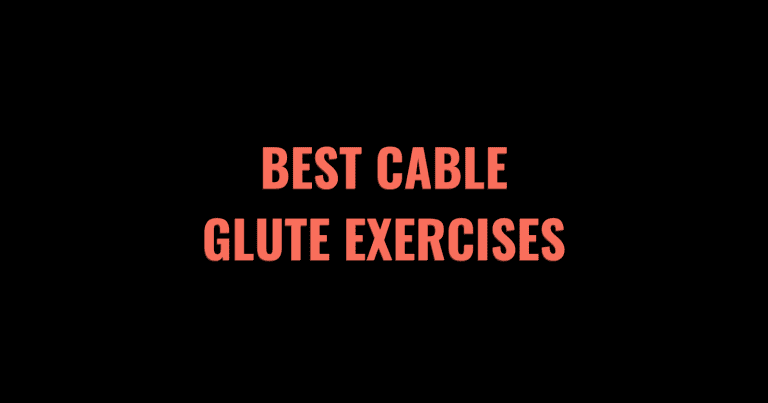Love it or hate it, leg day is an essential part of any dedicated lifters’ training plan. Your legs have several different muscle groups, an important one being the quadriceps. The quads are located on your thigh’s anterior (front) and are composed of four different muscles, including the vastus lateralis, also known as the outer quadriceps.
The outer quad is the largest of the quad muscles and also generates the most power out of the four quadricep heads. The outer quad helps extend your knee, absorb impact when running and jumping, and stabilize the thigh, hip, and kneecap. Building your outer quadriceps also creates more muscular, fuller-looking legs that can lift heavier weights in the gym. Here are the seven best exercises for targeting your outer quads.
Table of Contents
- 1 The 7 Best Outer Quad Exercises
- 2 Outer Quad (Vastus Lateralis) Workout
- 3 Vastus Lateralis (Outer Quad) Muscle Anatomy
- 4 Frequently Asked Questions
- 5 Other Muscle Groups Exercises
- 5.1 The 8 Best Rear Delt Bodyweight Exercises
- 5.2 The 7 Best Middle Trap Exercises
- 5.3 The 9 Best Rear Delt Dumbbell Exercises [Tested]
- 5.4 The 7 Best Lower Lat Dumbbell Exercises
- 5.5 The 7 Best Medial Head Tricep Exercises
- 5.6 The 8 Best Short Head Bicep Exercises
- 5.7 The 9 Best Short Head Bicep Dumbbell Exercises
- 5.8 The 8 Best Lateral Head Tricep Exercises
- 5.9 The 9 Best Side Delt Exercises for Broader Shoulders
- 5.10 10 Best Cable Shoulder Exercises
- 5.11 The 10 Best Front Delt Exercises
- 5.12 The 8 Best Long Head Bicep Exercises
- 5.13 The 8 Best Rear Delt Exercises
- 5.14 The 6 Best Cable Rear Delt Exercises (2023)
- 5.15 The 7 Best Cable Glute Exercises
The 7 Best Outer Quad Exercises
- Internal Rotation Leg Extension
- Front Squats
- Narrow Stance Leg Press
- Dumbbell Forward Lunges
- Machine Hack Squats
- Sissy Squats
- Bulgarian Split Squats
1. Internal Rotation Leg Extension
Benefits of Internal Rotation Leg Extensions
The leg extension is one of the best exercises for isolating the quads without exhausting other muscle groups in the body. By turning your toes in slightly (less than 45 degrees), you emphasize the outer quads. This can increase strain on the knee joint, so start with a lighter load than you would normally lift in a standard leg extension. If it still causes any knee discomfort, skip the internal toe rotation and do standard leg extensions.
How to Perform Internal Rotation Leg Extensions
- Sit down in a leg extension machine. Adjust the backrest and footpad to achieve your desired range of motion. The footpad should rest across the tops of your shins, just above your ankles.
- Select an appropriate weight, remembering to reduce the load if this exercise variation is new for you.
- Grip the handles by your sides and maintain a neutral upper spine by looking straight ahead and tucking the chin.
- Squeeze your quads to extend your knees and lift the ankle pad upwards.
- Stop when your knees are fully extended but not locked out or hyperextended.
- Pause for 1-2 seconds, then slowly release the pad back to its starting position.
- Repeat for the desired number of repetitions and sets.
Check out this useful video from Jeff Nippard, which provides a comprehensive overview of using the leg extension machine to target the quads. Skip ahead to 04:30 to see a demonstration of the toes in leg extension for targeting the outer quads.
2. Front Squats
Benefits of Front Squats
Front squats are a great squat variation for targeting the outer quadriceps. Front squats involve balancing a barbell across your collarbone area, increasing the load in the front of your legs compared to a back squat. Keeping a narrow stance in your front squats helps to target the outer quad. Front squats are a challenging and effective compound movement that will fire up your quads and improve your core strength.
How to Perform Front Squats
- Load a barbell in a squat rack, so it is level with your mid-chest.
- Step under the bar and position the barbell across your upper chest and shoulders.
- Push your elbows forward and grip the barbell with your hands just wider than shoulder-width distance.
- Keep your elbows high to ensure the barbell is securely in place across the front of your body.
- Unrack the barbell and step backwards with your feet firmly planted about hip-width distance apart.
- Take a deep breath to brace your core and keep your torso upright.
- Keep your gaze straight ahead. Bend your knees to lower into a squat.
- Stop when you reach your desired depth, aiming for at least parallel to get the full benefits of the exercise.
- Exhale as you push with force through your forefoot to stand back up.
- Repeat for the desired number of reps and sets, ensuring to reset and brace by taking a breath before starting each rep.
This video from CrossFit provides a useful visual aid for how to perform the front squat.
3. Narrow Stance Leg Press
Benefits of Narrow Stance Leg Press
The leg press machine is a great way to isolate the legs similarly to the squat without straining the back and core muscles. Leg presses are a great accessory to traditional barbell squats and have many variations to target the legs from different angles. Keeping your feet towards the bottom of the footpad and your legs closer together shifts the emphasis away from the glutes and hamstrings and into the outer quads to build an impressive quad sweep.
How to Perform Narrow Stance Leg Presses
- Sit down on the leg press machine with the backrest and footpad adjusted so that your knees are at about a 90-degree angle.
- Place your feet on the footpad, closer than hip-width distance apart. Your feet should be in the bottom half of the platform to emphasize the fronts of your legs.
- Hold onto the handles at your sides and keep your gaze straight ahead.
- Push through your feet to press the platform away from you, and unlock the safety bars.
- Press your lower back into the backrest, and ensure your legs are extended without locking out the knee.
- Inhale and bend your knees to slowly lower the platform towards your body until your legs are bent at around 90 degrees.
- Exhale and push through your feet to engage the quads and push the platform back to the starting position.
- Repeat for the desired number of reps. Ensure you replace the safety lock when you finish your set.
- Repeat for as many sets as you need.
This video provides a helpful visual guide for performing the narrow stance leg press.
4. Dumbbell Forward Lunges
Benefits of Dumbbell Forward Lunges
The outer quad is heavily engaged in knee extension exercises and moving the leg forward. Dumbbell lunges are one of the best ways to target the outer quads. They also challenge your balance, coordination, and core stability. Dumbbell lunges are a convenient and effective quad exercise that can be done anywhere you have access to a set of dumbbells and a clear floor space.
How to Perform Dumbbell Forward Lunges
- Grab two dumbbells with a neutral grip (palms face inward) and rest them at your sides with your arms extended.
- Stand tall with your feet about hip-width distance apart.
- Tuck your chin and brace your abdominals.
- Take a long step forward with one leg with a slight bend in the knee.
- Bend both knees to lower your body towards the ground so that your front knee is bent at 90 degrees and your back knee hovers just above the ground.
- Push through your front foot to engage the quads and lift your body upward as you step your feet back together.
- Complete a full set on one leg before switching sides, or alternate legs for each rep until you complete the desired number of work per leg.
Watch this useful video for a visual guide on how to perform the dumbbell forward lunge.
5. Machine Hack Squats
Benefits of Machine Hack Squats
Similar to the leg press, the hack squat machine is a useful accessory lift to complement barbell squats. The hack squat machine provides support and stability so you can focus on targeting your legs without worrying about perfecting the alignment of your torso. It also provides lots of options to change how you target your legs. Hack squats are done with a narrow stance, and your feet lower on the footpad will shift more emphasis onto your outer quads.
How to Perform Machine Hack Squats
- Load the desired weight onto the hack squat machine.
- Position your body in the machine, so your back and shoulders rest against the pads.
- Position your feet directly under your hips or slightly narrower to target the outer quads.
- Straighten the legs to release the weight from the safety handles. Be careful not to lock out or hyperextend the knees.
- Slowly bend your knees and squat down until your thighs are roughly parallel to the ground.
- Press your feet firmly into the platform to extend the knees and hips and lift the weight back to its starting position.
- Repeat for the desired number of reps and sets. Make sure you re-engage the safety handles at the end of each set.
Check out this video for a visual guide on performing hack squats on the hack squat machine.
6. Sissy Squats
Benefits of Sissy Squats
Don’t let the name of this exercise fool you – the sissy squat is not for the faint-hearted lifter. Sissy squats were popularized by the legendary bodybuilder Arnold Schwarzenegger. This challenging exercise is highly taxing on the quads, core, and hips, even without adding additional weight.
You can perform sissy squats in several ways, the easiest of which is with a specific piece of equipment called the sissy squat bench. More advanced lifters can also try equipment-free variations as long as they are confident in their balance and lower body mobility.
How to Perform Sissy Squats
- Stand on the platform of a sissy squat bench with your feet hip-width distance apart. The tops of your feet should be underneath the padded foot support bar.
- Lock your feet in position by resting your calves against the adjustable leg pad.
- Retract (pull back) your shoulder blades and place your hands on your outer hips for stability and added mind-muscle connection.
- Bend at the knees to squat and tilt your body backward as far as possible without losing balance and control.
- Squeeze your quads hard to lift your bodyweight back to its upright starting position.
- Repeat for the desired number of reps and sets.
This video provides a useful visual guide on how to do the sissy squat using a sissy squat bench.
This video from Scott Herman demonstrates a sissy squat alternative using dumbbells to elevate the heels.
7. Bulgarian Split Squats
Benefits of Bulgarian Split Squats
The Bulgarian split squat is a challenging single leg (unilateral) exercise that helps reduce muscle imbalances, build strength and stamina and improve balance and core stability. They target all the muscles in your lower leg, but by shortening your stance, you can place more emphasis on the front of your legs and get more muscle activation in the outer quadriceps.
How to Perform Bulgarian Split Squats
- Stand in front of a bench or other platform with your feet hip-width apart.
- Grab two dumbbells and hold them at your sides using a neutral grip. This exercise can also be done with kettlebells or a barbell.
- Take a step forward with one foot to get into a split stance. Carefully lift your back leg and rest the top of your back foot on the platform.
- Stand up straight, brace your core, and don’t allow the lower back to arch. Keep your gaze straight ahead, and your chin tucked.
- Slowly bend your front knee so that both legs descend towards the ground.
- Stop when your front knee is bent at a 90-degree angle, and your back knee is hovering just above the ground.
- Push through the front foot to engage the quads and lift yourself back to your starting position.
- Complete as many reps as desired on your first side before switching to the other leg.
- Complete as many sets as desired, ensuring you complete an even number of sets per leg.
With unilateral exercises, it is beneficial to start on your weaker or less dominant side and match the work on your stronger side. This video provides a helpful visual guide for performing dumbbell Bulgarian split squats.
Outer Quad (Vastus Lateralis) Workout
The outer quadriceps cannot be completely isolated, but they can be targeted by making minor adjustments. In general, the quadriceps require at least six sets per week to maintain their current size and strength for experienced lifters. If you do a lot of walking or running, you may need more volume than this to counteract the catabolic effects of lower intensity exercise. The Renaissance Periodization Quad Hypertrophy Guide recommends that to build a stronger, bigger quad sweep, you will benefit from doing at least eight sets of direct quad training per week.
Week 1
- Day 1
- Front Squats: 3 sets x 5 reps @ 80%
- Day 2
- Bulgarian Split Squats: 2 sets per side x 10 reps @ 70%
- Day 3
- Leg Extensions (Toes In): 2 sets x 20 reps @ 30%
Week 2
- Day 1
- Front Squats: 4 sets x 4 reps @ 85%
- Day 2
- Bulgarian Split Squats: 2 sets per side x 12 reps @ 60%
- Day 3
- Leg Extensions (Toes In): 2 sets x 25 reps @ 30%
Week 3
- Day 1
- Front Squats: 5 sets x 4 reps @ 85%
- Day 2
- Bulgarian Split Squats: 3 sets per side x 12 reps @ 60%
- Day 3
- Leg Extensions (Toes In): 2 sets x 30 reps @ 25%
Week 4
- Day 1
- Front Squats: 4 sets x 3 reps @ 85%
- Day 2
- Bulgarian Split Squats: 3 sets per side x 10 reps @ 70%
- Day 3
- Leg Extensions (Toes In): 2 sets x 20 reps @ 35%
Week 5 (Deload)
- Day 1
- Front Squats: 3 sets x 3 reps @ 70%
- Day 2
- Bulgarian Split Squats: 2 sets per side x 8 reps @ 60%
- Day 3
- Leg Extensions (Toes In): 2 sets x 15 reps @ 30%
Vastus Lateralis (Outer Quad) Muscle Anatomy
Image source: kenhub
The outer quad is also known as the vastus lateralis muscle. It is one of the four quad muscles located on the front of your thigh. The vastus lateralis is located on the outer part of your quadriceps. It helps stabilize the kneecap, hip, and thigh when walking or running. It is also responsible for supporting knee extension. The quadriceps also include the rectus femoris, vastus intermedius, and vastus medialis. The vastus lateralis (outer quad) is the largest of the four muscles in the quadriceps and is essential for absorbing impact and initiating many different types of movement.
Frequently Asked Questions
The outer quads should be trained at least twice per week for muscle maintenance. You should aim for at least eight sets per week to see size and strength gains, split up into two or three sessions.
Like most muscle groups, your quads respond best to lifting weights between 30% and 85% of your one-rep max. This usually means a weight that can be lifted for 5 – 30 reps in your first set if taken to failure. Most lifters will get the best results from keeping around 50% of their total weekly volume within the moderate-intensity range, meaning a weight that you safely lift for about 10-20 reps. The other 50% can be split up between heavier (weights you can lift for about 5-10 reps) and lighter (between 20 and 30 reps) loads. A variety of loading intensities is useful to continue progressing and breaking through plateaus.
Your outer quad exercise sets should vary between 5 and 30 reps per set, depending on your exercise selection. For more compound exercises, like squats and hack squats, lower rep ranges of 5 – 15 are optimal. This is because compound exercises are more taxing on your postural muscle and joints and are less conducive for higher rep ranges. Conversely, isolation exercises like leg extensions respond better to higher rep ranges of 10-30 reps at a lower weight.
Your outer quad exercise sets should vary between 5 and 30 reps per set, depending on your exercise selection. For more compound exercises, like squats and hack squats, lower rep ranges of 5 – 15 are optimal. This is because compound exercises are more taxing on your postural muscle and joints and are less conducive for higher rep ranges. Conversely, isolation exercises like leg extensions respond better to higher rep ranges of 10-30 reps at a lower weight.
The outer quads, also known as the vastus lateralis or the ‘quad sweep,’ are the largest and outermost muscle of the quadriceps. The outer quad ‘sweep’ forms a bow shape from your outer hip and extends down to the knee. Training your outer quads creates a fuller, rounder-looking upper leg. The vastus lateralis is also important for stabilizing the knee cap and hip and absorbs impact in activities like running and jumping. Additionally, strengthening your outer quads will help you perform better in compound lower leg exercises like squats and lunges.
Other Muscle Groups Exercises
If you enjoyed this post, check out our other collections of the best exercises for each muscle group below.


